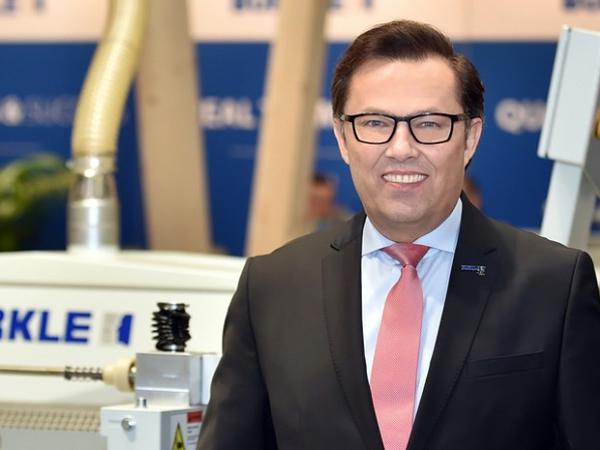
Date: 24 January 2017
The name Bürkle stands for the development and production of machines, lines and systems for the wood-based materials processing sector, as well as the electronics, photovoltaic, glass, construction, automotive and plastic cards industries.
Olaf Rohrbeck, Managing Director at Bürkle, discussed pole position in the core technologies of the furniture industry product portfolio, the current restructuring programme and the project business during an interview with HOB.
Mr Rohrbeck, for a good five months you have been responsible for the technical division of the Bürkle Group, along side your existing responsibilities as Director ofSales, Marketing and Service. What, in your opinion, are the main advantages of linking the market, product development and services in this way?
Olaf Rohrbeck: The main reason behind this decision is self-evident. Within the holistic process of consolidation which is now underway, it is vital to create lean management structures, to pool decisionmaking processes and to merge responsibilities.
In this way, we are able to pursue our aims and measures more systematically and more directly and implement them more quickly. Furthermore, Bürkle is an engineeringdriven company to a large degree.
The individual areas of operation therefore interlock and complement each other (for example, with system project planning) more closely and with more synergies than in a highly-diversified machine construction company with lot size production.
Consolidating all the know-how from the business divisions under one higher-order area of responsibility is thus expedient and very efficient.
It is well-known that the Dutch investment company Nimbus has been the majorityshareholder of Bürkle since 2013. The company has been undergoing a process of restructuring since then. How has Bürkle developed during this time?
To answer this question, I’d like to discuss the present situation regarding our product portfolio. Bürkle is now in a very good position again in the individual sectors.
For example, we have been able to significantly increase the market shares in Asia in the multilayer boards/PCBs sector and have established an even better position thanks to our production plant in Shanghai.
Today, we are global leaders in the area of high temperature press technology and are the preferred partner of suppliers for the consumer electronics industry. The solar market is still very volatile.
Despite this, we have still managed to improve our market position in the industrial market sector further over the last 2 years by means of advanced technologies, such as liquid antilight reflective coating application and liquid photoresist applied by rollers, as well as multi-daylight presses for glass-to-glass solar module production, which are increasingly being used in the market.
During the 2016 fiscal year, we were thus able to generate project orders, including with global players, which will continue into 2018.
And what is the situation in the traditional surfaces finishing area?
The core business of Robert Bürkle GmbH is still definitely surface engineering. In the areas of doors, hardwood floors and lightweight panels, enough work has been ensured for the Mastholte plant until well into 2017.
Our long tradition of expertise in these areas of technology was the decisive factor for new contracts from existing and new customers.
The implementation of a modular system based on performance classes was a key step forward in terms of development in the area of laminating technology. It facilitates the use of all conventional types of adhesives in system solutions with differing machine technology.
This is complemented by the automation area, i.e. materials handling technology in general, as well as highperformance workpiece handling systems and, more recently, robot technology.
The concentrated continuation of our development plan, drafted in 2015, has also proven to be an important measure.
For example, we are extending the ‘liquid coating/roller coating’ product sector with the introduction of spray painting technology and will be presenting a completely new machine series at Ligna 2017. To sum it up, Bürkle has recorded positive, targeted development since it joined forces with Nimbus.
The ongoing optimisation processes at Bürkle also involve various restructuring measures. What do they focus on?
The restructuring programme, launched in 2014, initially primarily concentrated on group-wide consolidation and the liquidation of non-profitable companies and sites.
Closing the production plant in Paderborn, the transferral of the automation sector and the merging of resources at the site in Mastholte was a particular defining milestone which can definitely be viewed as a success story achieved in a very short space of time.
Furthermore, we have recently made another defining decision and have taken an active, concrete step in the CBM portfolio sector, i.e. card punching, gathering and spot welding collating systems as well as tape laying systems.
As of January 2017, we will transfer this area, including the staff, to Otto Künnecke GmbH, Holzminden, and will ensure the further increase in our market share by means of cooperation in terms of technology and sales.
The next systematic step which we are now planning is a more flexible production system at the Freudenstadt site involving an outsourcing concept. Implementation has just got underway.
How far have you got with the actual implementation or what is the scheduled timeframe?
All the initiated measures which a presumed level of impact has been defined for in the plans will be implemented by the end of 2018. This means that we have already taken the economic effects of the implementation into account in our corporate planning.
By the end of 2019 and continuing into 2020, we want to exploit newly arising additional potential as part of supplementary measures.
Naturally, we are aware that our goals are very ambitious and that there could be setbacks on our way forward. However, we are following a clearly-defined strategic plan, are working hard on the operative tasks and are highly motivated.
The furniture industry is a market sector in which Bürkle has voiced its intention of regaining its pole position in the core technologies. What is your current position in this sector, as well as in the areas of flooring, wood-based panels and doors?
In the area of multi-ply hardwood flooring production in particular, Bürkle has always boasted state-of-the art solutions that have been our USPs. Currently, many customers are working on modernisation plans and reinvestment is being budgeted for.
In the last few months in particular, we have been able to be a successful part of this and have generated orders. Long-standing customers especially have once again chosen our solutions.
Since the end of 2015, we have noticed a certain upswing in the field of automated door production, in the field of lightweight design in particular. With our automation and process solutions, we are an important pioneer and point of contact for our customers.
How important is the project business for attaining the aspired position in the woodbased materials industry?
It plays a key role. In the last two years, we have worked intensively on the further qualification of the engineering departments in the company and on the development of our expertise in relation to project business.
The internal organisational structures have been significantly optimised in order to facilitate professional and revenue-oriented project planning work. Tools for successful project controlling and effective project monitoring have been further professionalised.
This positive development is underlined by a considerable increase in revenue for the system project planning implemented in 2015 and 2016.
What is the significance of industrial customers as opposed to much smaller scale companies?
As you know, Bürkle has always had, and still has, an industrial focus. Nevertheless, or perhaps because of this, we have used the ‘industrial lines’ to derive system solutions for medium-scale operations as well as for small-scale companies. We will be pursuing this approach intensively in the next few years. We will therefore be widening our portfolio, thus becoming even more attractive in the market.
When we look at the core markets, Bürkle is currently aiming to stabilise them in Europe and the USA. Potential for growth is envisaged in central Asia, the Middle East and China. What is the situation at this interim stage?
A good example is the current development in the USA. In the future, we will be following our own strategic plan in the North American market. In 2017, we will move into a new showroom in Greensboro/North Carolina.
We will work intensively in the market in the future with the support of our existing sales and service branch, Bürkle North America in California.
For Bürkle, the USA is of enormous strategic importance, especially in relation to the marketing of our new spray painting range.
Germany and Poland will remain the most important sales markets in Europe. In Asia, we will regain lost territory in the next few years. We will increase our activities in China, as well as in the Middle East and central Asia.
What sales measures do these activities require?
A three-stage sales model has been implemented and we will be developing it over the next two years in line with the market.
We will be prioritising the extension of our factory sales, Bürkle Engineering. In stage 2, we will also be setting up “extended factory sales” in key markets, i.e. local sales staff with a high degree of technical expertise.
The development of the global sales activities via sales partners will focus strictly on their qualification and the relevant core market analysis.
Mr Rohrbeck, to finish, let’s venture another look ahead to 2017. Can you give us an initial forecast with respect to the expectations for the Ligna year?
For us, 2017 is a decisive year with very high expectations. Ligna 2017 is the industry's leading global trade fair par excellence.
At this point I would only like to say one thing – a considerably larger stand at the Ligna will provide enough space for the presentation of new and much improved solutions for our market partners.
With ‘Bürkle 4U’, we started to give new impetus to the market at Ligna 2015. In 2017, we will take this another step forward.
www.buerkle-gmbh.de
 600450
600450

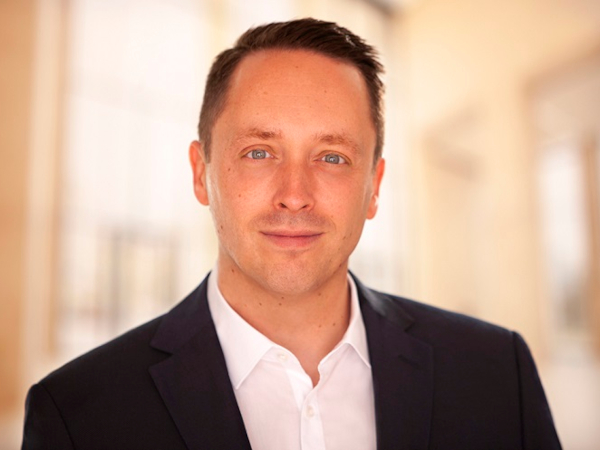
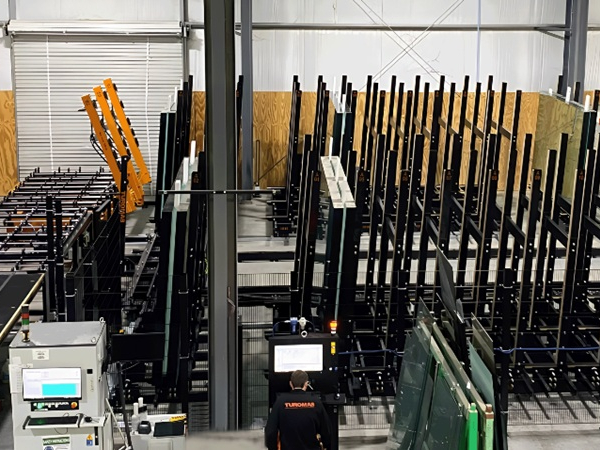

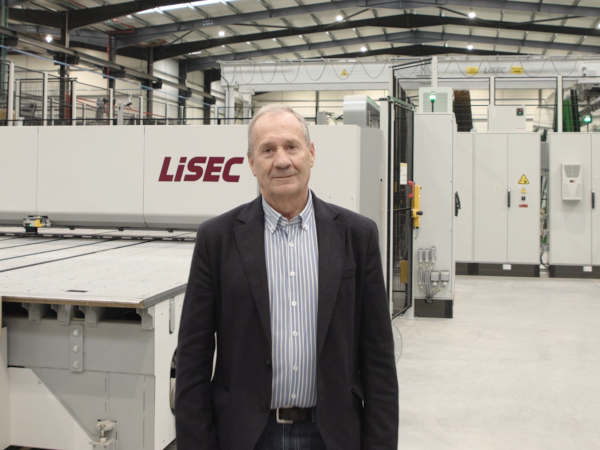
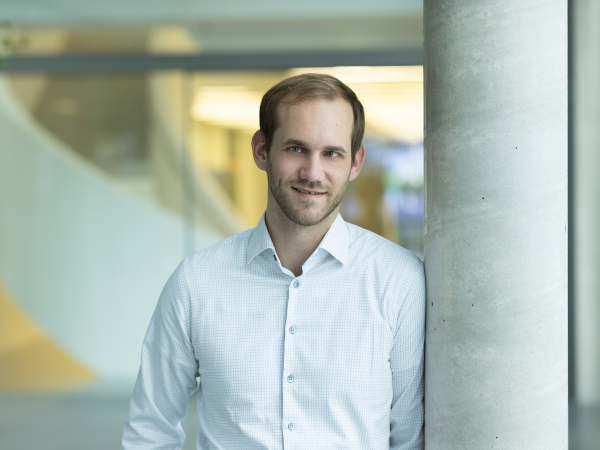










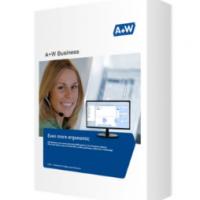
Add new comment